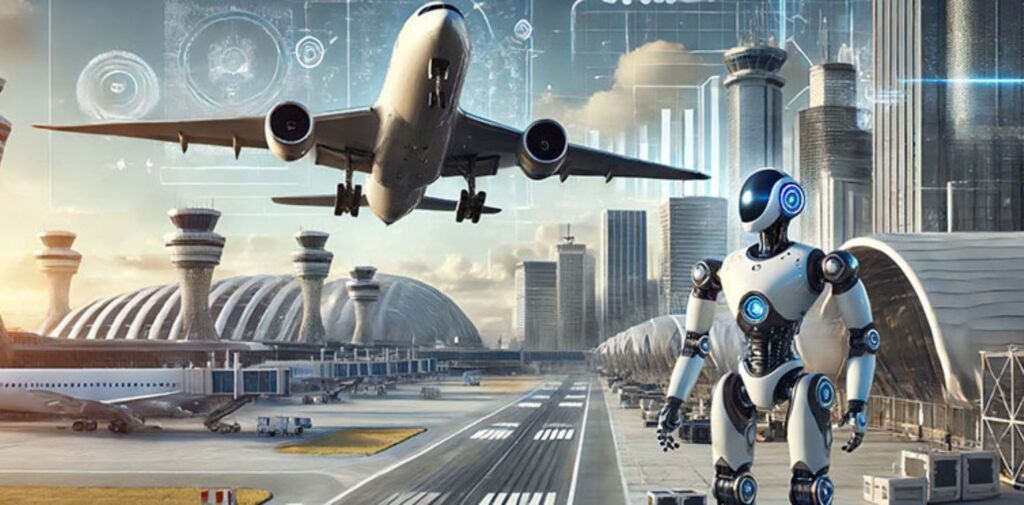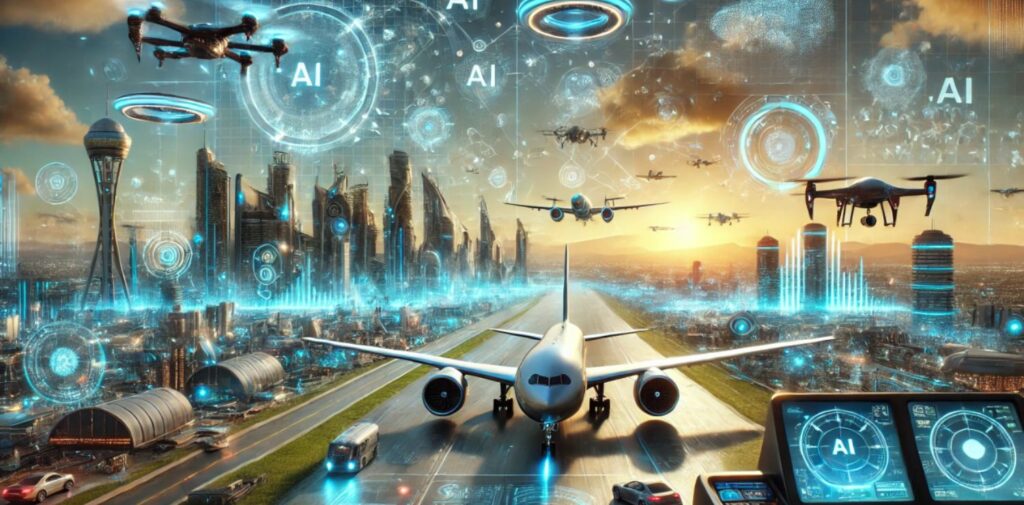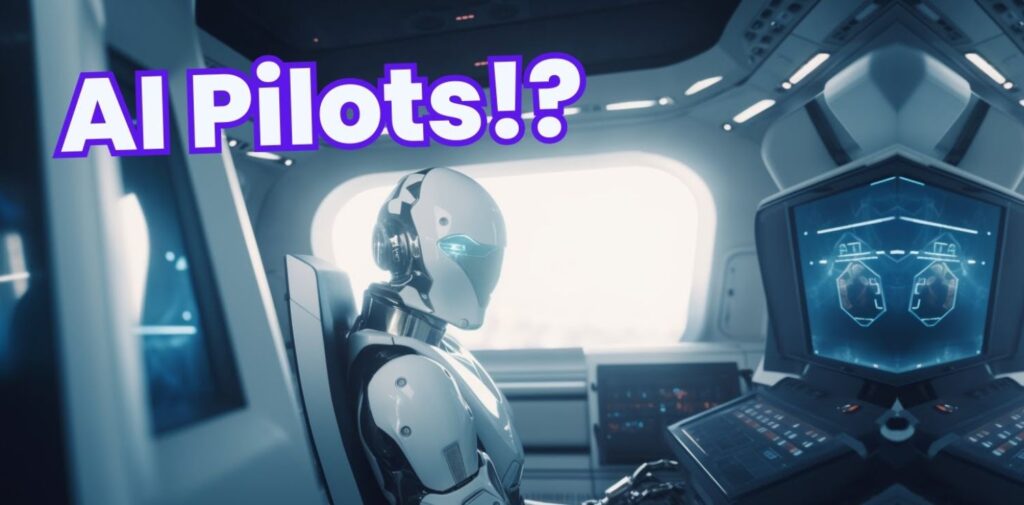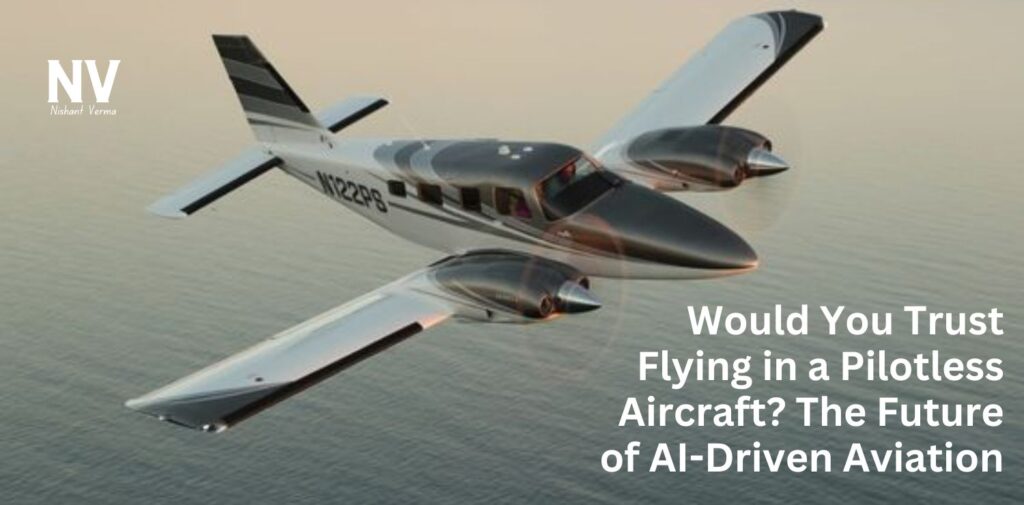Imagine boarding a plane where there’s no pilot in the cockpit—just sophisticated Artificial Intelligence (AI) systems at the controls. This may sound like a sci-fi movie, but it’s becoming a reality. The world’s first AI-operated passenger plane is set to challenge traditional aviation norms, presenting new opportunities and complexities for the industry. While the concept is thrilling, it also raises critical questions: How safe is it? Will passengers trust it? And what does it mean for the future of aviation?

The Rise of AI in Aviation
The introduction of AI in aviation isn’t entirely new. From autopilot systems to AI-assisted decision-making tools, technology has long been aiding human pilots. However, the leap to a completely pilotless aircraft involves advanced machine learning algorithms, robust sensors, and state-of-the-art computing power, all working in sync to replace human intervention. This new AI passenger plane could soon be seen on runways, but its acceptance largely depends on its reliability, safety, and public perception.
Understanding AI-Operated Planes: What Sets Them Apart?
Unlike the current planes that operate with human pilots at the helm, AI-operated aircraft rely on machine learning and real-time data processing to handle complex in-flight scenarios. This involves advanced AI systems capable of:

- Autonomous Decision Making: The AI can analyze vast amounts of data—weather conditions, air traffic, and engine performance—in milliseconds to make informed decisions.
- Self-Learning and Adaptation: The AI learns from each flight and continuously improves its operational efficiency and safety measures.
- Integration of Multiple Systems: These planes are equipped with multiple interconnected systems that work in tandem to ensure stability and respond to unforeseen challenges.
This transition to AI-operated flights could also reduce human error, which is responsible for a significant percentage of aviation accidents today. But would you feel comfortable flying in a plane with no human pilot on board?
Safety Concerns: Will AI Match Human Intuition?
One of the main challenges in rolling out AI-operated planes is public acceptance. Passengers may feel uneasy about relying solely on technology, especially in high-risk situations. Human pilots often act on instinct and intuition, developed through years of experience—qualities that are difficult for AI to replicate. Critics argue that AI, despite being efficient, may not be able to handle all emergency scenarios, particularly those involving quick decision-making and empathy.
Additionally, security is a significant concern. With AI-operated planes, the risk of hacking or malfunction increases, raising fears about potential cyberattacks. To mitigate these risks, developers must create robust cybersecurity frameworks and implement stringent safety protocols.
What Are the Benefits of Pilotless Aircraft
Despite these concerns, AI-operated planes offer numerous benefits that could transform the aviation industry:
Cost Efficiency: Without the need for human pilots, airlines can reduce training, employment, and operational costs. This could make air travel more affordable for passengers.
Increased Safety and Precision: AI can process and react to data far faster than humans, minimizing errors and enhancing overall safety.
Reduced Workload for Human Pilots: For planes that aren’t fully autonomous, AI can assist human pilots, allowing them to focus on complex decision-making while routine tasks are handled by machines.
The Road Ahead: Challenges and Regulatory Hurdles
The journey to making AI passenger planes mainstream involves overcoming numerous challenges. Regulatory bodies like the Federal Aviation Administration (FAA) and the International Civil Aviation Organization (ICAO) will need to establish new guidelines and standards for these aircraft. This includes validating AI systems’ safety, defining accountability in case of accidents, and ensuring these planes meet international airworthiness criteria.
Moreover, pilot unions and associations might resist the change, fearing job losses and diminished roles for human pilots. To gain widespread acceptance, AI-operated planes must go through rigorous testing, certifications, and real-world validations.

The Human Touch: Can AI Replace Pilots?
The debate on whether AI can fully replace pilots is ongoing. Proponents argue that AI is less prone to fatigue, distractions, or emotional responses, which can lead to human errors. However, the human ability to innovate under pressure, make ethical judgments, and adapt to unforeseen circumstances is something AI has yet to master. While AI can replicate many technical aspects of flying, it lacks the emotional intelligence and moral reasoning that make human pilots indispensable.
Public Perception: Trusting the Unseen Pilot
Public perception will play a crucial role in the adoption of AI-operated planes. The idea of boarding a plane without a pilot may seem daunting to many, given that most passengers find comfort in knowing a skilled professional is in control. Airlines will need to conduct extensive educational campaigns to build trust and confidence among travelers. Transparency in how these AI systems work, along with a solid track record of safety, will be key in achieving this.
Conclusion: The Future of AI in Aviation
AI-operated passenger planes are poised to revolutionize the aviation industry, offering a glimpse into the future where technology seamlessly integrates with transportation. While the path to acceptance is fraught with challenges, the potential benefits make it an exciting frontier. As technology advances and AI systems become more sophisticated, we may soon find ourselves flying in planes where the cockpit is occupied not by a human but by an intelligent machine.
Would you leap and trust a pilotless aircraft? The choice may soon be yours.




